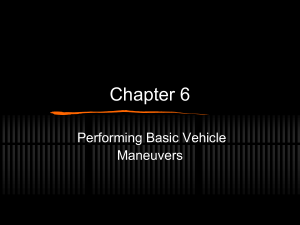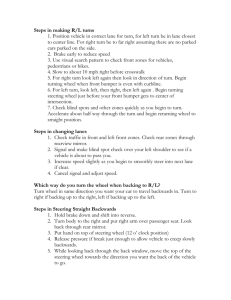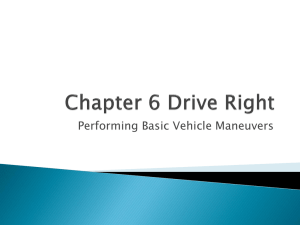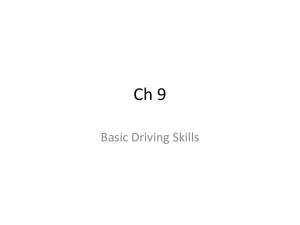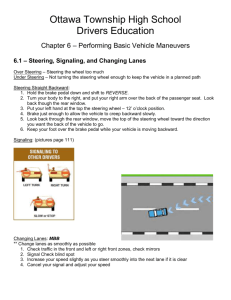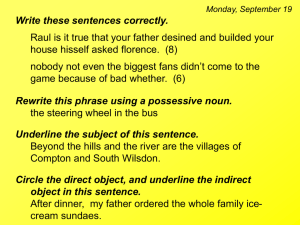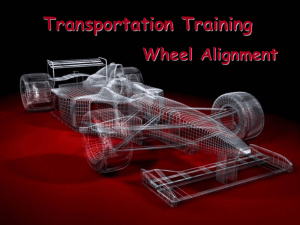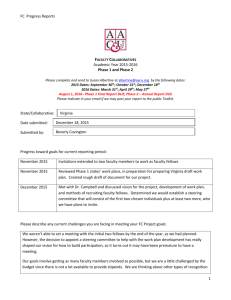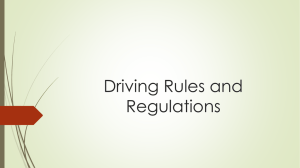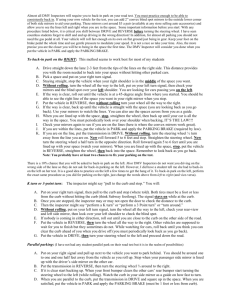Keys To Teaching the Skills of Driving
advertisement
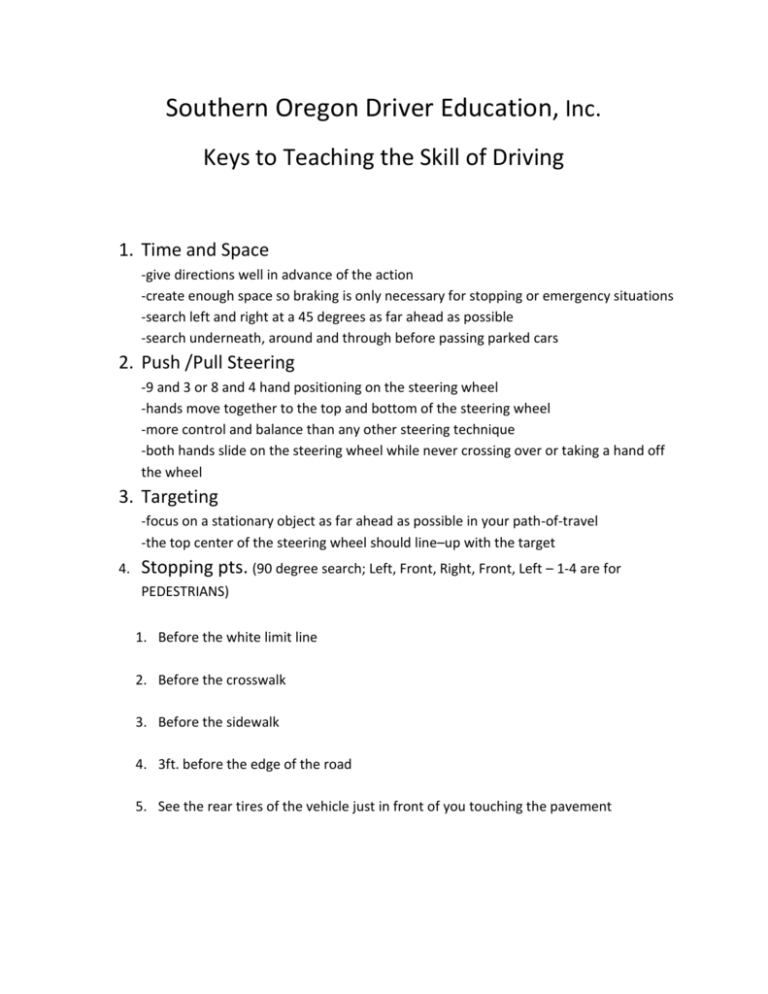
Southern Oregon Driver Education, Inc. Keys to Teaching the Skill of Driving 1. Time and Space -give directions well in advance of the action -create enough space so braking is only necessary for stopping or emergency situations -search left and right at a 45 degrees as far ahead as possible -search underneath, around and through before passing parked cars 2. Push /Pull Steering -9 and 3 or 8 and 4 hand positioning on the steering wheel -hands move together to the top and bottom of the steering wheel -more control and balance than any other steering technique -both hands slide on the steering wheel while never crossing over or taking a hand off the wheel 3. Targeting -focus on a stationary object as far ahead as possible in your path-of-travel -the top center of the steering wheel should line–up with the target 4. Stopping pts. (90 degree search; Left, Front, Right, Front, Left – 1-4 are for PEDESTRIANS) 1. Before the white limit line 2. Before the crosswalk 3. Before the sidewalk 4. 3ft. before the edge of the road 5. See the rear tires of the vehicle just in front of you touching the pavement 5. Lane Positions: communicate to other vehicles 1. Moving straight ahead 2. Turning left or creating space to the right 3. Pulling to the curb or preparing for a right turn 4. Driving in a residential street or preparing to pass 5. Turning right or leaving the roadway to the right 6. Turning pts. (R.O.W. 45 degree vs. 90 degree search) The point at which the student starts turning Right turn Rt. side view mirror aligns with the curb or edge of road Left turn Lt. side view mirror aligns with the yellow line or the middle of the road 7. Right of Way rules (R.O.W.) Controlled intersection -first vehicle to arrive -tie goes to the right Uncontrolled intersection -vehicle on the right -always use caution 8. Transition pegs (recovery of a turn) Left turn -when the post covers lane position #1 recover the steering wheel Right turn -when the center of the rear view mirror aligns with lane position #1 recover the steering wheel 9. Reference Points For precision vehicle placement on the roadway Right Side Limit – Position your family vehicle 3 – 6 inches away from and parallel to a line on the right 1. What is your Reference Point? Seeing the curb coming through the middle of the hood 2. Mark its location with an X on the diagram below. 3. Draw in your sightline from the reference point to where it aligns with the line. 3 Feet From Right Side – (space for turning right) Position your vehicle 3 feet away from curb for right turn 1. What is your Reference Point? Seeing the curb coming through the right headlight 2. Mark its location with an X on the diagram below. 3. Draw in your sightline from the reference point to where it aligns with the line. Left Side Limit – Position your family vehicle 3 – 6 inches away from and parallel to a line on the left 4. What is your Reference Point? Seeing the dividing line coming through the left headlight 5. Mark its location with an X on the diagram below. 6. Draw in your sightline from the reference point to where it aligns with the line. Front Limit – Position your family vehicle 3 – 6 inches away from and perpendicular to a line in the front 7. What is your Reference Point? Seeing the Stopping points in reference to the side view mirrors 8. Mark its location with an X on the diagram below. 9. Draw in your sightline from the reference point to where it aligns with the line. 10.Drive lines The use of LANE POSITIONS to drive a STRAIGHT LINE through a CURVE. 11. Spacing between vehicles: 4 seconds or more of following distance When the car in FRONT of you passes a STAIONARY object to the RIGHT start COUNTING 1001,1002, 1003,1004,1005, etc… until you pass the same STATIONARY object. You want at least 4 seconds or more of space between your car and the car in your front zone at all times while moving forward.
